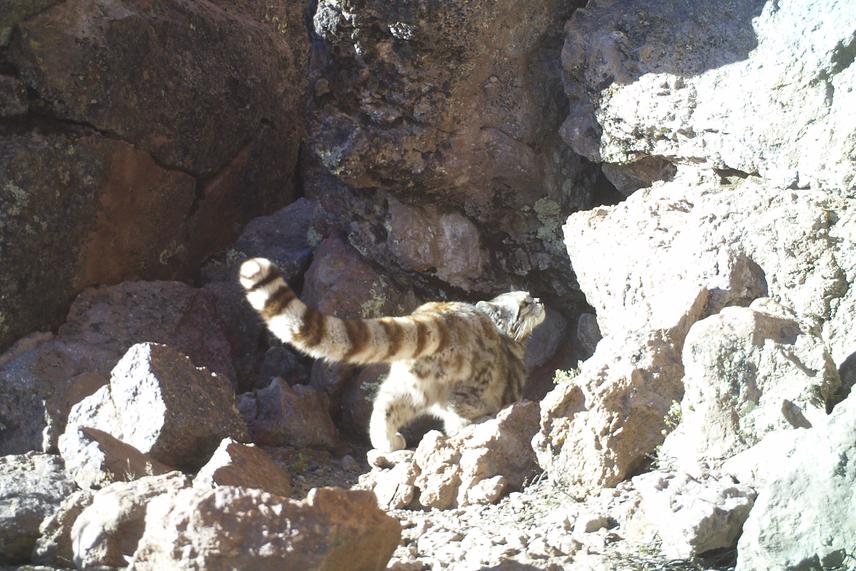Nicolás Lagos Silva
Use non-invasive tools to generate a potential suitable habitat map and characterize the populations of the rare and endangered Andean cat in northern Chile for its conservation

Andean cat photographed by a camera trap in the high Andes of Tarapacá Region.
This project will support the conservation of the endangered Andean cat, one of the rarest and least known felids in the world. The primary goal of this project is to assess the relationship of the Andean cat to its habitat in the northern area of its distribution in Chile, home to the most important population of Andean cats in the country, and an area extremely threatened due to increasing mining activities. Using camera trapping and scat analysis, we will increase the knowledge of Andean cat populations in this highly sensitive area. Using niche modelling tools we will quantify the habitat use and occurrence patterns of the Andean cat, allowing prioritizing areas for the conservation of the species. DNA analysis from faecal samples will be used to measure the genetic structure of the Andean cat populations. This information is usually not taken into account when developing conservation plans but are critically important to define candidate conservation units (populations). The combination of both habitat modelling and the DNA analysis tools will provide more accurate information to guide future conservation efforts, based on both genetic and ecological information. This work will be done in collaboration with CONAF, the government agency in charge of the administration and conservation of the protected areas in Chile, including a methodology applicable for future monitoring of the Andean cat and other carnivore populations on this and other areas. For this purpose we will develop field training and a workshop for the park rangers working in the area.
The results of this work will be shared with key local stakeholders to increase the awareness and relevance of the conservation of Andean ecosystems conservation. Feedback from these stakeholders will help improve the future implementation of conservation strategies in the area, inside and outside protected areas. We expect this information will be the basis for a future regional biodiversity conservation planning of the Andean ecosystems focused on the endangered Andean cat as flagship species.